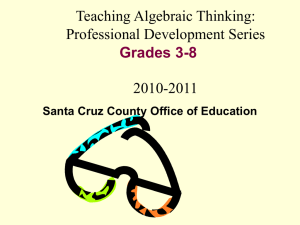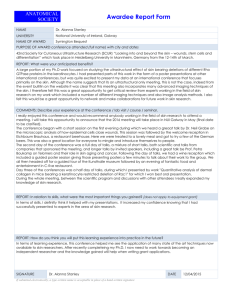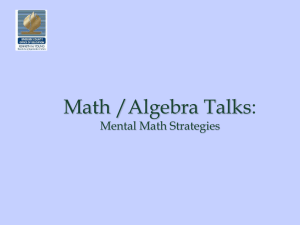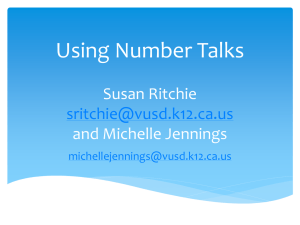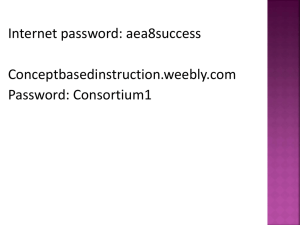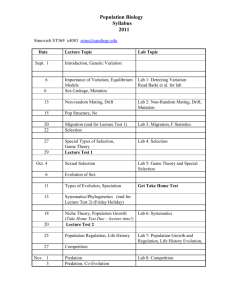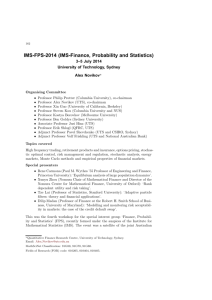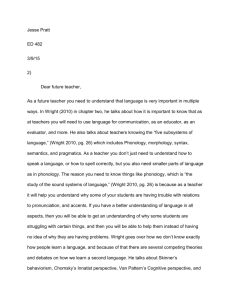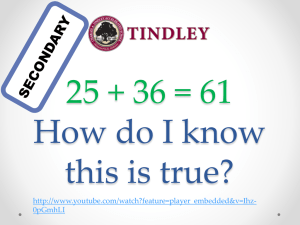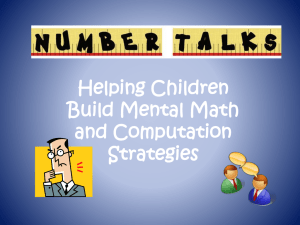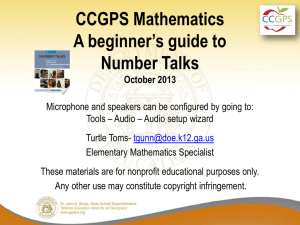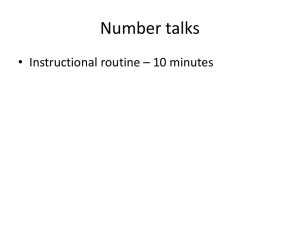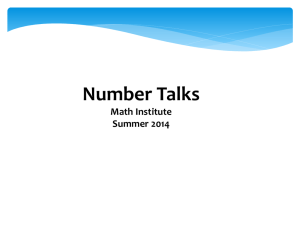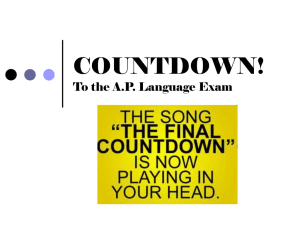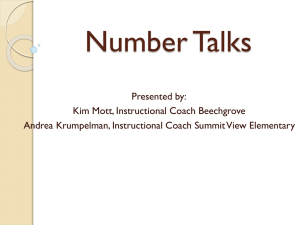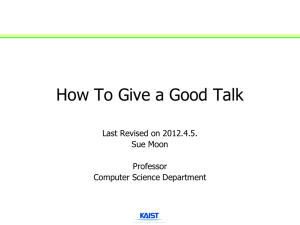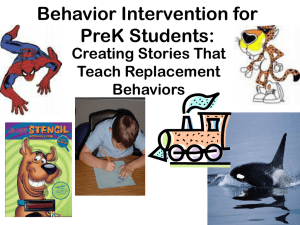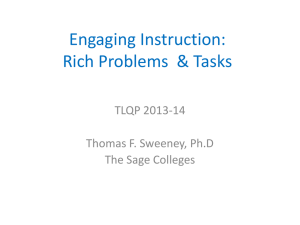Number Talks and Mathematical Practices
advertisement
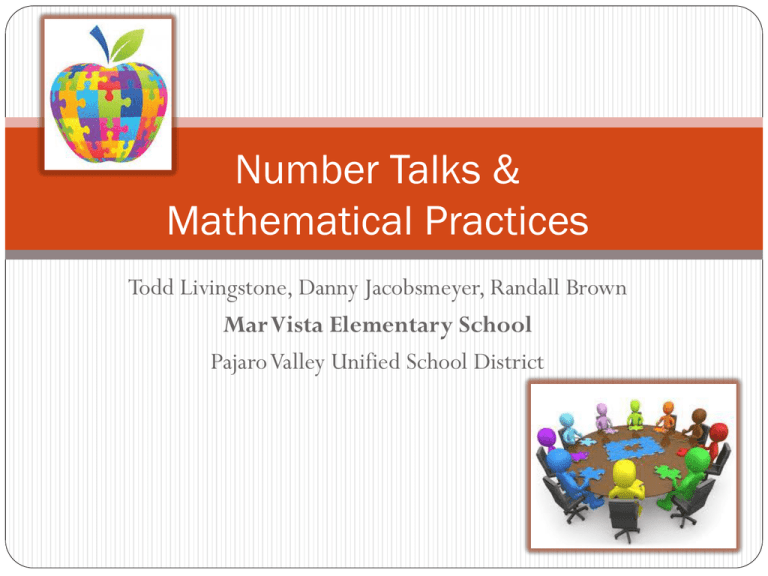
Number Talks & Mathematical Practices Todd Livingstone, Danny Jacobsmeyer, Randall Brown Mar Vista Elementary School PajaroValley Unified School District Description of Practice In Number Talks, students gather in a centralized area on the floor, a sequence of problems are given one at a time that are intended to provide students with opportunities to discover mathematical relationships within the sequence of problems. Students are taught common hand signals to communicate their understanding which also aids with formative assessments for the teacher. Students debate the solution, once agreed upon, various strategies are shared and explained by the students. Students will make sense of mathematics, develop efficient computation strategies, communicate mathematically, to reason and prove solutions. Links to Common Core Instructional Shifts The Shifts in Math Focus strongly where the Standards focus. 2. Coherence: Think across grades, and link to major topics within grades. 3. Rigor: In major topics pursue conceptual understanding, procedural skill and fluency, and application with equity intensity. 1. Number talks school wide addresses these shifts. Number talks also address many of the standards for mathematical practices. Links to Common Core Instructional Shifts Mathematical practices are eight overarching standards that thread through all the grade levels and are not content specific but more related to mathematical habits. Number talks address many of these standards for mathematical practices. 1 Make sense of problems and persevere in solving them. 2 Reason abstractly and quantitatively. 3 Construct viable arguments and critique the reasoning of others. 6 Attend to precision. 7 Look for and make use of structure. 8 Look for and express regularity in repeated reasoning. Impact on Students Quotes from Mr. Jacobsmeyer’s Mar Vista 2012-2013 6th grade class: “It gave me a new way or a better way of approaching problems by not using the algorithm.” “If you listened to your classmates explain their method, them you could get more ideas for other problems.” “Say someone has a cool method, you could take various approaches to make you own method. “Learning other methods and learning how others think, I can use strategies to solve more complex problems through breaking them down.” Impact on Students Tips on Implementation(Lessons Learned) Tips for Teachers: Your are not teaching in the traditional sense, it’s more of a Socratic process. Students are discovering and you are guiding them through questions. Take time to build in the routine and structure. Give the process some time and intended results will follow Tips for Administrators: Transition- go slow to go fast Will not look like a traditional math class. Support/materials (see following slide) Resources & Tools for getting started Daniel Jacobsmeyer and Todd Livingstone at Mar Vista Daniel_Jacobsmeyer@pvusd.net Todd_Livingsotne@pvusd.net Number Talks: Helping Children Build Mental math and Computation Strategies by Sherry Parrish, Math Solutions www.insidemath.org : keyword search Number Talks Monterey Bay Area Math Project www.mbamp.ucsc.edu/
